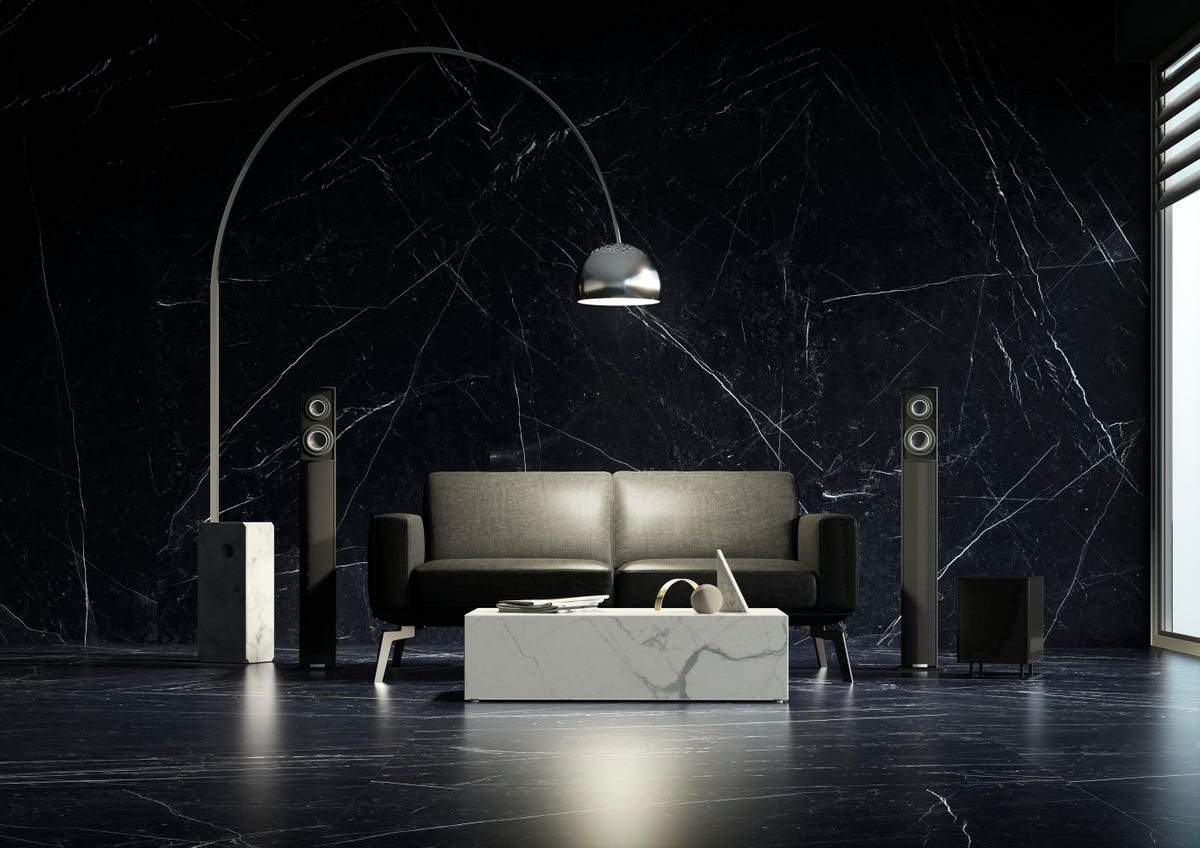If you’re planning to remodel or expand your home next year, there will likely be an incredibly sleek new option available for operating your lighting and technology controls. Hypertouch has been showcased by its patent holder, surfacing manufacturer Iris Ceramica Group, at several design industry trade shows in the U.S. and Europe, and is currently working its way through the UL certification process with expected availability here by fourth quarter. It’s already being specified in Europe, the global company’s U.S. marketing director Giulia Bucci shared in an email. Why might you be interested?
Concept
Have you ever heard the term ‘wall acne’? It’s what designers disdainfully call the cluster of switches needed to operate the many lighting layers, fans and other controls cluttering up their designs. Voice control, touchpads and remotes have been three recent ways of addressing these eyesores. Hypertouch will be the latest.
“The idea was to find ways to enhance the versatility, performance, and design continuity of our ceramic surfaces, eliminating unaesthetic light switch plates and covers,” Bucci wrote. The technology can integrate controls for doors and windows, climate and audio-video, she noted, if a home is tied into an automation package, or just room lighting if a client prefers. It can be used indoors or out in a covered setting, on walls, as noted, or on Iris’ porcelain countertop surfaces. When approved in the U.S., it will be available across the company’s seven domestic brands.
Tatiana Machado-Rosas, senior interior designer for San Diego area design/build firm QualCraft Construction, sees Hypertouch’s potential for her firm’s high end clients with contemporary styling preferences, she emailed in response to a request for her reaction to the product’s introductory materials. She can see it on both wall and countertop surfaces, she said.
“Sometimes we need to add switches to a kitchen island and it would be nice not to have to interrupt the slab’s design,” she suggested. “I can also see it in a custom-designed home office built into a desk. The user could touch the surface to turn on a specific set of lights, pull up blinds, turn on music,” she contemplated, appreciating the aesthetic and operational benefits it offers.
Eric Goranson, host of the nationally syndicated Around the House radio show, podcast and regional Northwest TV program, also weighed in on the Hypertouch concept. “The ability to hide controls and keep a clean design within a space will be tempting for many homeowners,” he commented in an email after also reviewing the introduction; it has been needed for a while, he added. Goranson pointed out that this installation offers a discreet way to control home automation systems without the high tech visuals that clash with more traditional home designs, another versatility benefit to designers.
Installation
This is not a DIY-friendly product. “To install Hypertouch, a ceramic installer and certified electrician are needed,” Bucci explained. She described the process as installing a sensor and wiring connection below or behind the ceramic surface. “Depending on the type of kit, a system integrator might also be needed,” she added. “The wiring connection is very similar to those present in traditional stand-alone systems or integrated home systems.”
Ken Erdmann, director of technical education programs for smart home technology association CEDIA, agreed in an email. “Once the location of the switch/control is established, it would be much like any other installation: Place the box/enclosure, run the wire, install the device, and program the system to respond to the device input.”
This work could be performed by an electrician, he noted, but when Hypertouch is tied to a larger smart home system, a technology integrator would make sense. “By connecting to an input that does lighting, sound, security or a status update and program the processor accordingly, the integrator could do a number of things with this type of product.” He thought it could be a sleek substitute for clients who don’t like voice controls.
Concerns
Goranson, Machado-Rosas and Erdmann all had questions about Hypertouch from their professional perspectives. “Baby boomers like comfort, but also simplicity in maintenance, so some will be concerned about what to do if it breaks,” Machado-Rosas predicted.
“Younger clients want everything to be controlled from their phones, including heated floors, motorized exterior shades, appliances, etc.,” the designer observed. This is probably an ideal Hypertouch prospect, but not the vacationing set. “This technology would be challenging in short term rentals like luxury AirBnB properties because the tenants would have to be taught where the switches are!” she added.
Goranson pointed out, “It has to work flawlessly to be successful. I don’t think any of us wants an experience like standing in a public restroom trying to find the sensor to turn the water on at the sink. I also think there could be a strong learning curve for the people that are not as tech savvy, and guests will have no idea how to find or use these features without being told.” (So maybe not for guest suites!) A subtle Hypertouch label can be incorporated into the design, but that reduces its aesthetic appeal as a hidden control.
Pointing out the difficulty in repairing a comparable system released by another manufacturer, and hidden speakers from a different firm, Erdmann recalled, “Since the only way to service it was to cut into the wall, it fell from favor.”
Iris’ Bucci says the company has considered this, and recommends wall installations being placed where the components can be easily accessed – such as near an open doorway – so the premium surfacing material wouldn’t need to be torn out for the wiring or kit to be accessed. For a countertop or desk installation, it can be accessed from a hole cut into the cabinetry below.
The CEDIA executive also noted the downside of hiding controls: Forgetful or future owners might block an invisible sensor with a piece of art and then it won’t work. That will need to be addressed in a home’s sales process.
Last Words
Goranson, who loves trying out the latest home systems and technologies for his audiences, summed up his thoughts on Hypertouch this way: “It’s an interesting concept. I would love to play around with it at an install and see how well it works.” Watching trade show attendees marvel at it last week, I suspect he’s not alone.
Read the full article here










